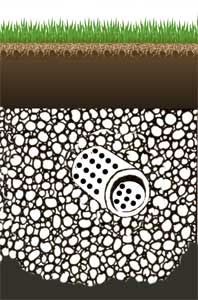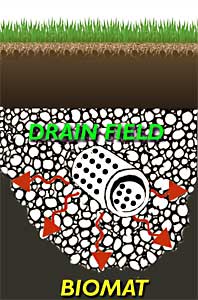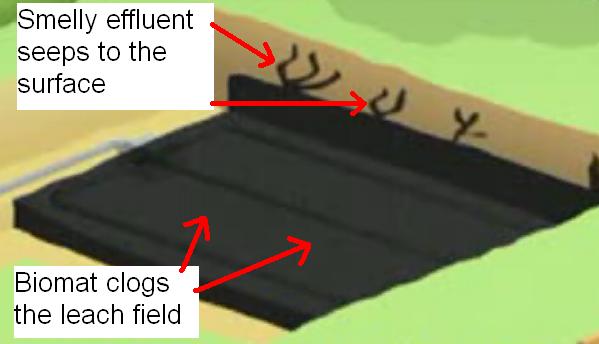In our first and second blogs in this series, we discussed the functioning of a healthy septic tank and what happens when septic tank problems arise. Today, we’ll discuss problems with septic tank drain fields.
Drainfield Problems
 Septic tank problems cause and lead to drainfield problems. The drain field is where the wastewater goes after it leaves the septic tank, also called leachfield or disposal field. It can also go to a mound, a seepage bed, or a seepage pit. The general and more technical term for all these methods of handling the wastewater from the tank is the soil absorption system. We will begin with the most common type, the drainfield or leach field.
Septic tank problems cause and lead to drainfield problems. The drain field is where the wastewater goes after it leaves the septic tank, also called leachfield or disposal field. It can also go to a mound, a seepage bed, or a seepage pit. The general and more technical term for all these methods of handling the wastewater from the tank is the soil absorption system. We will begin with the most common type, the drainfield or leach field.
Once sewage undergoes primary treatment in the septic tank, the clarified effluent flows to the drainfield, where it is discharged into the soil for final treatment and disposal.
A typical drainfield consists of several relatively narrow and shallow gravel-filled trenches with a perforated pipe near the top of the gravel to distribute the wastewater throughout each trench. In most cases, drain fields will perform indefinitely if an effective septic aerator is installed.
The Biomat
 The naturally-occurring process of wastewater entering your leach field, drainfield, mound, seepage bed, or a seepage pit is the formation of the biomat. The biomat (biological mat) is comprised of a black, jelly-like mat that builds on the bottom and sidewalls of the drainfield trench. It is composed of anaerobic (without oxygen) microorganisms (and their by-products) that attach themselves to soil and rock particles. Their food is the organic matter in the septic tank wastewater. Because the biomat has a low permeability, it retards the rate of flow out of the trench into the drain field soil.
The naturally-occurring process of wastewater entering your leach field, drainfield, mound, seepage bed, or a seepage pit is the formation of the biomat. The biomat (biological mat) is comprised of a black, jelly-like mat that builds on the bottom and sidewalls of the drainfield trench. It is composed of anaerobic (without oxygen) microorganisms (and their by-products) that attach themselves to soil and rock particles. Their food is the organic matter in the septic tank wastewater. Because the biomat has a low permeability, it retards the rate of flow out of the trench into the drain field soil.
